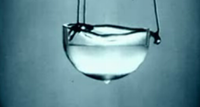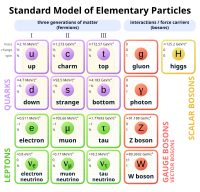
Determination of α(Mz) from an hyperasymptotic approximation to the energy of a static quark-antiquark pair
Sign Up to like & getrecommendations! Published in 2020 at "Journal of High Energy Physics"
DOI: 10.1007/jhep09(2020)016
Abstract: Abstract We give the hyperasymptotic expansion of the energy of a static quark-antiquark pair with a precision that includes the effects of the subleading renormalon. The terminants associated to the first and second renormalon are… read more here.
Keywords: static quark; energy; energy static; quark antiquark ... See more keywords

Trigonometric Rosen–Morse Potential as a Quark–Antiquark Interaction Potential for Meson Properties in the Non-relativistic Quark Model Using EAIM
Sign Up to like & getrecommendations! Published in 2019 at "Few-Body Systems"
DOI: 10.1007/s00601-019-1531-y
Abstract: Trigonometric Rosen–Morse potential is suggested as a quark–antiquark interaction potential for studying thermodynamic properties and masses of heavy and heavy–light mesons. For this purpose, the N-radial Schrodinger equation is analytically solved using an exact-analytical iteration… read more here.
Keywords: morse potential; rosen morse; trigonometric rosen; antiquark interaction ... See more keywords

Quark-Antiquark Bound State in Three-Dimensional Approach
Sign Up to like & getrecommendations! Published in 2018 at "International Journal of Theoretical Physics"
DOI: 10.1007/s10773-017-3620-3
Abstract: In this paper we develop a three-dimensional approach for describing meson bound states based on the momentum-helicity basis. To this end, we formulate the relativistic form of Lippmann-Schwinger equation in the momentum-helicity basis which leads… read more here.
Keywords: three dimensional; bound; dimensional approach; quark antiquark ... See more keywords

A pattern for the flavor dependent quark-antiquark interaction
Sign Up to like & getrecommendations! Published in 2019 at "Chinese Physics C"
DOI: 10.1088/1674-1137/43/11/114103
Abstract: A flavor dependent kernel is constructed based on the rainbow-ladder truncation of the Dyson-Schwinger and Bethe-Salpeter equation approach of Quantum Chromodynamics. The quark-antiquark interaction is composed of a flavor dependent infrared part and a flavor… read more here.
Keywords: antiquark interaction; flavor dependent; quark antiquark;

Cross sections for inelastic K+Φ scattering
Sign Up to like & getrecommendations! Published in 2023 at "Chinese Physics C"
DOI: 10.1088/1674-1137/acd9be
Abstract: In the first Born approximation we study the reactions KΦ→πK, ρK, πK*, and ρK* with quark-antiquark annihilation and creation. Transition amplitudes are derived with the development in spherical harmonics of the relative-motion wave functions of… read more here.
Keywords: inelastic scattering; quark antiquark; cross; sections inelastic ... See more keywords

The effect of temperature gradient on the heavy quark–antiquark potential using a gravity dual model
Sign Up to like & getrecommendations! Published in 2020 at "Progress of Theoretical and Experimental Physics"
DOI: 10.1093/ptep/ptaa180
Abstract: Thermal systems have traditionally been modeled via Euclideanized space by analytical continuation of time to an imaginary time. We extend the concept to static thermal gradients by recasting the temperature variation as a variation in… read more here.
Keywords: temperature gradient; quark antiquark; antiquark potential;

Medium evolution of a static quark-antiquark pair in the large Nc limit
Sign Up to like & getrecommendations! Published in 2021 at "Physical Review D"
DOI: 10.1103/physrevd.103.034010
Abstract: We study the transitions between the different color states of a static quark-antiquark pair, singlet and octet, in a thermal medium. This is done nonperturbatively exploiting the infinite mass limit of QCD. This study is… read more here.
Keywords: large limit; quark antiquark; medium; limit ... See more keywords

Hybrid static potentials in SU(3) lattice gauge theory at small quark-antiquark separations
Sign Up to like & getrecommendations! Published in 2022 at "Physical Review D"
DOI: 10.1103/physrevd.105.054503
Abstract: We compute hybrid static potentials in SU(2) lattice gauge theory using a multilevel algorithm and three different small lattice spacings. The resulting static potentials, which are valid for quark-antiquark separations as small as 0.05 fm,… read more here.
Keywords: quark antiquark; lattice gauge; hybrid static; static potentials ... See more keywords

Unphysical properties of the static quark-antiquark four-point correlator in Landau gauge
Sign Up to like & getrecommendations! Published in 2019 at "Physical Review D"
DOI: 10.1103/physrevd.99.014506
Abstract: We consider the four point connected correlator representing a static quark-antiquark pair separated by a spatial distance R, propagating for a Euclidean time T. This function is computed by lattice Monte Carlo in SU(2) pure… read more here.
Keywords: landau gauge; quark antiquark; correlator landau; static quark ... See more keywords